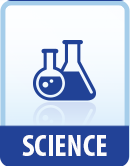|
This section contains 367 words (approx. 2 pages at 300 words per page) |
World of Scientific Discovery on Hans Karl August Simon von Euler-Chelpin
Euler-Chelpin, the son of a German army officer, was raised largely by his grandmother and originally planned to be an artist. By the time he graduated from high school, however, his interests had changed. He decided to become an inorganic chemist and enrolled in the University of Berlin where his instructors included Max Planck, Otto Warburg and Emil Fischer). In 1895 he received his doctorate in chemistry there.
Over the next few years, Euler-Chelpin worked and studied in Stockholm, Sweden, with a number of eminent scientists, (including Hermann Walther Nernst) and became more and more interested in organic chemistry. He was particularly intrigued by the study of enzymes and the roles they played both in carbohydrate metabolism and in the process of fermentation. He became a Swedish citizen in 1902 and, in 1906, joined the staff of the University of Stockholm, where he remained for most of his career.
Euler-Chelpin's most important research was conducted between 1923 and 1929. With the assistance of two associates, Karl Myrbäck (b.1900) and R. Nilsson, he focused his attention on cozymase, the coenzyme that Sir Arthur Harden had discovered in yeast juice in 1904. Euler-Chelpin not only believed that cozymase played a major role in fermentation--a role he eventually was able to work out--he believed the coenzyme acted in the human body as well.
Although enzymes were notoriously difficult to isolate, Euler-Chelpin and his associates were finally able to produce an extremely potent cozymase-rich substance. The substance resembled a nucleotide, containing sugar, a phosphate and a purine base. After more study, the research team proved that the chemical structure of cozymase was actually that of diphosphopyridine nucleotide (DPN). By studying the action of cozymase on a variety of organic materials, Euler-Chelpin was able to conclude that the coenzyme was one of the most important catalysts in both animals and plants, and that it could be found in particular abundance in those parts of the body--such as muscles and the retina--with high carbohydrate metabolism.
For his work in advancing knowledge of the fermentation process and his studies on cozymase, Euler-Chelpin shared the 1929 Nobel Prize in chemistry with Harden. In later life, Euler-Chelpin worked on vitamins, helping to clarify the structure of several of them.
|
This section contains 367 words (approx. 2 pages at 300 words per page) |


